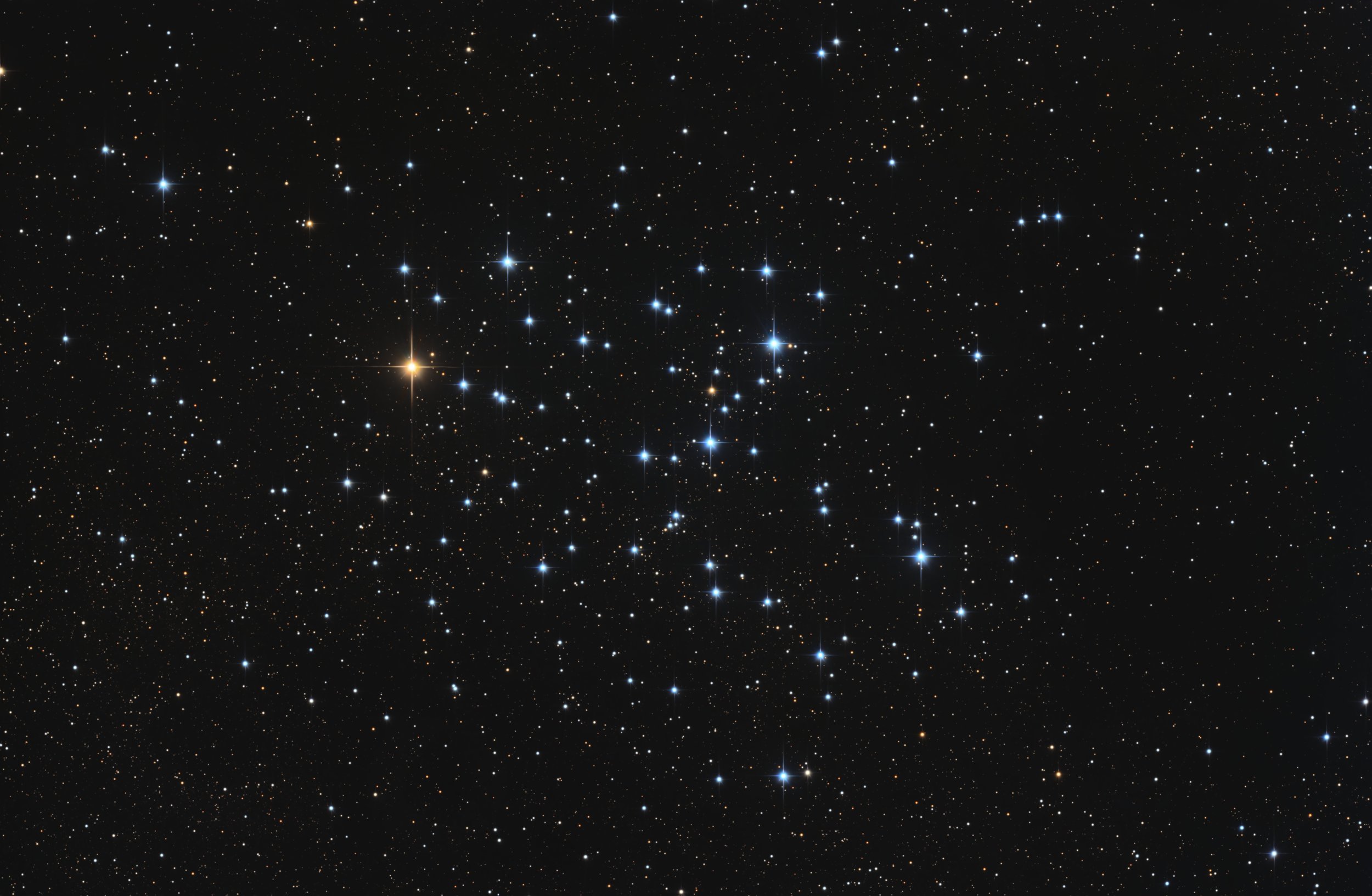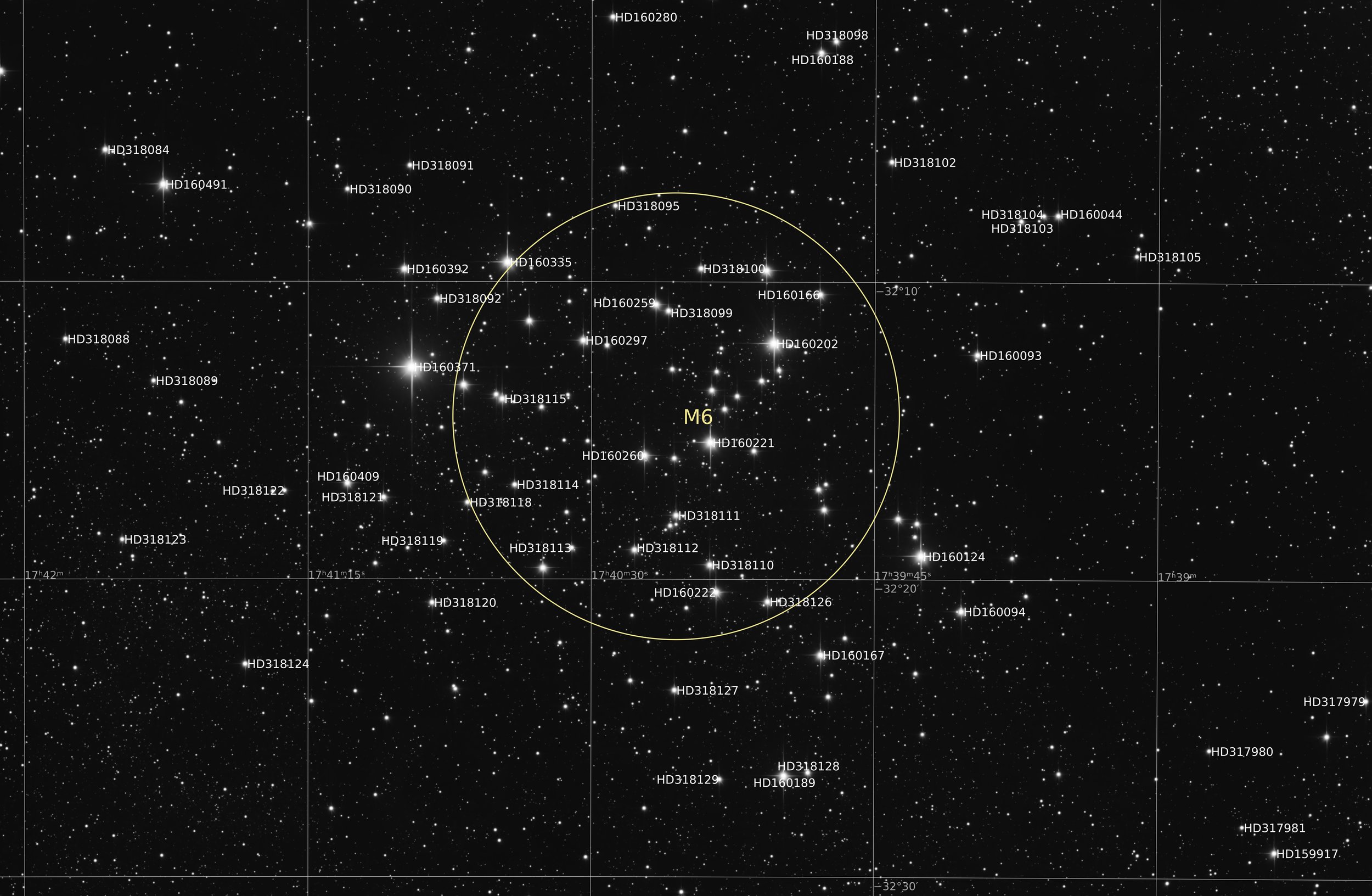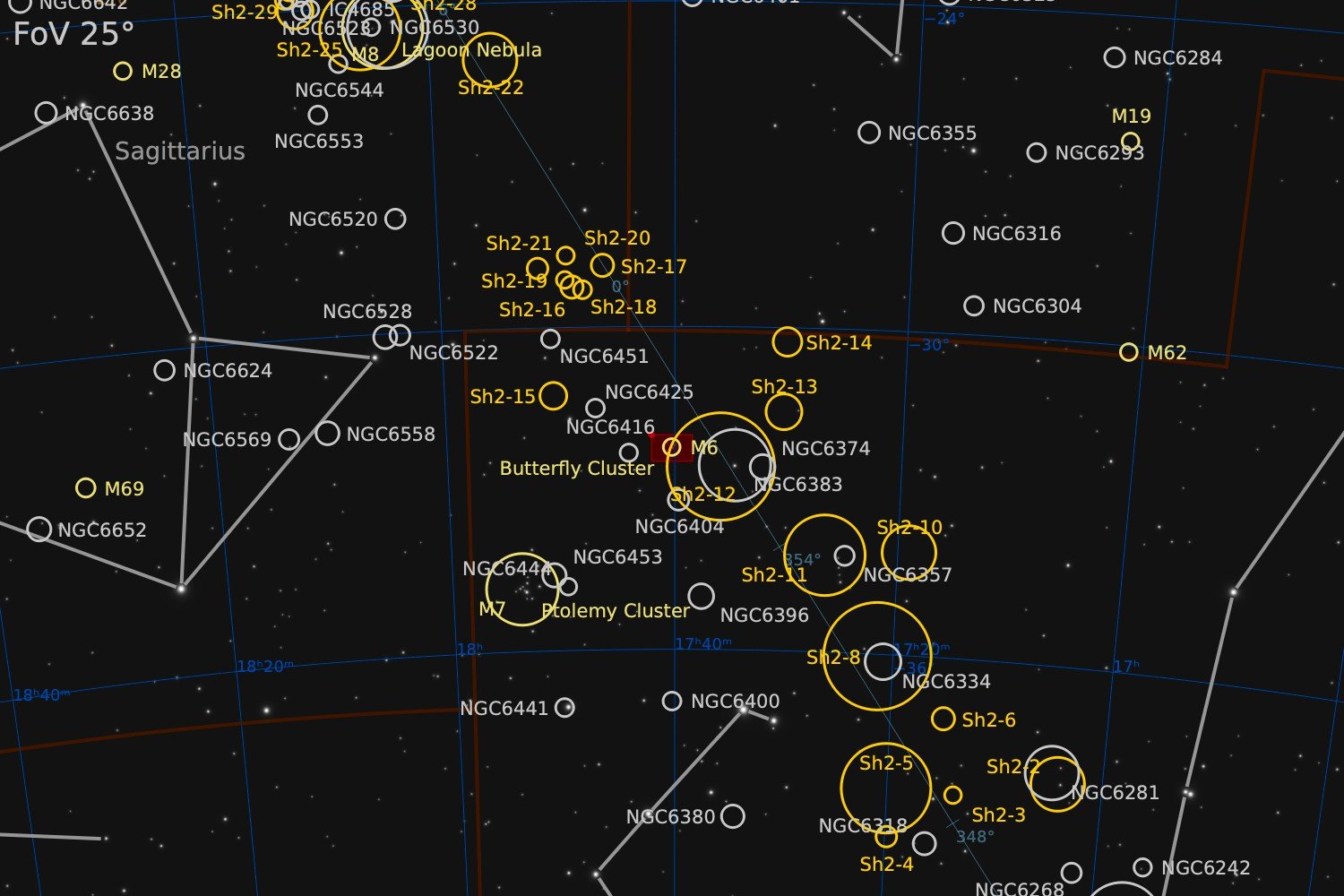M6
NGC 6405, Butterfly Cluster
46’ x 30’ | 0.3”/px | 9163 × 5982 px | full resolution
Scorpius
RA 17h 40m Dec -32° 15’ | 0°



Messier 6, also known as the Butterfly cluster, is an open cluster of stars in the southern constellation of Scorpius. The first astronomer to record its existence was Giovanni Battista Hodierna in 1654. However, Robert Burnham Jr. has proposed that the 2nd century astronomer Ptolemy may have seen it with the naked eye while observing its neighbour the Ptolemy Cluster (M7). Credit for the discovery is usually given to Jean-Philippe Loys de Chéseaux in 1746. Charles Messier observed the cluster on May 23, 1764, and added it to his Messier Catalog. The cluster is estimated to be 94.2 million years old. Cluster members show a slightly higher abundance of elements heavier than helium (metallicity) compared to the Sun. 120 stars, ranging down to visual magnitude 15.1, have been identified as most likely cluster members. Most of the bright stars in this cluster are hot, blue B-type stars but the brightest member is a K-type orange giant star, BM Scorpii, which contrasts sharply with its blue neighbours in photographs. BM Scorpii, is classed as a semiregular variable star, its brightness varying from magnitude +5.5 to magnitude +7.0. The cluster is located 24.59 kly from the Galactic Center and is following an orbit through the Milky Way galaxy with a low eccentricity of 0.03 and an orbital period of 204.2 Myr. At present it is 23 ly below the galactic plane, and it will cross the plane every 29.4 Myr.
source: Wikipedia
Data Acquisition
Data was collected over 4 nights during the full moon periods in the months of May and June 2025, using a 14” reflector telescope with full-frame camera at the remote observatory in Spain. Data was gathered using standard LRGB filters. A total of approximately 6 hours of data was finally combined to create the final image.
Location Remote hosting facility IC Astronomy in Oria, Spain (37°N 2°W)
Sessions
Frames
Equipment
Telescope
Mount
Camera
Filters
Guiding
Accessoires
Software
Planewave CDK14 (2563mm @ f/7.2), Optec Gemini Rotating focuser
10Micron GM2000HPS, custom pier
Moravian C3-61000 Pro (full frame), cooled to -10 ºC
Chroma 2” LRGB unmounted, Moravian filterwheel L, 7-position
Unguided
Compulab Tensor I-22, Dragonfly, Pegasus Ultimate Powerbox v2
Voyager Advanced, Viking, Mountwizzard4, Astroplanner, PixInsight 1.9.3
Processing
All processing was done in Pixsinsight unless stated otherwise. Default features were enhanced using scripts and tools from RC-Astro, SetiAstro, GraXpert, CosmicPhotons and others. Images were calibrated using 50 Darks, 50 Flats, and 50 Flat-Darks, registered and integrated using WeightedBatchPreProcessing (WBPP). The processing workflow diagram below outlines the steps taken to create the final image.
At -32° declination, this is the fourth lowest Messier object near the horizon and the lowest I’ve photographed. When I took the photo, it was only 20° above the horizon. This caused more halos and diffraction patterns than usual. I tried to reduce these during editing, but they are still more noticeable than in my other images.
Processing of the image followed largely a standard processing workflow as is shown below.
Processing workflow (click to enlarge)
This image has been published on Astrobin.
